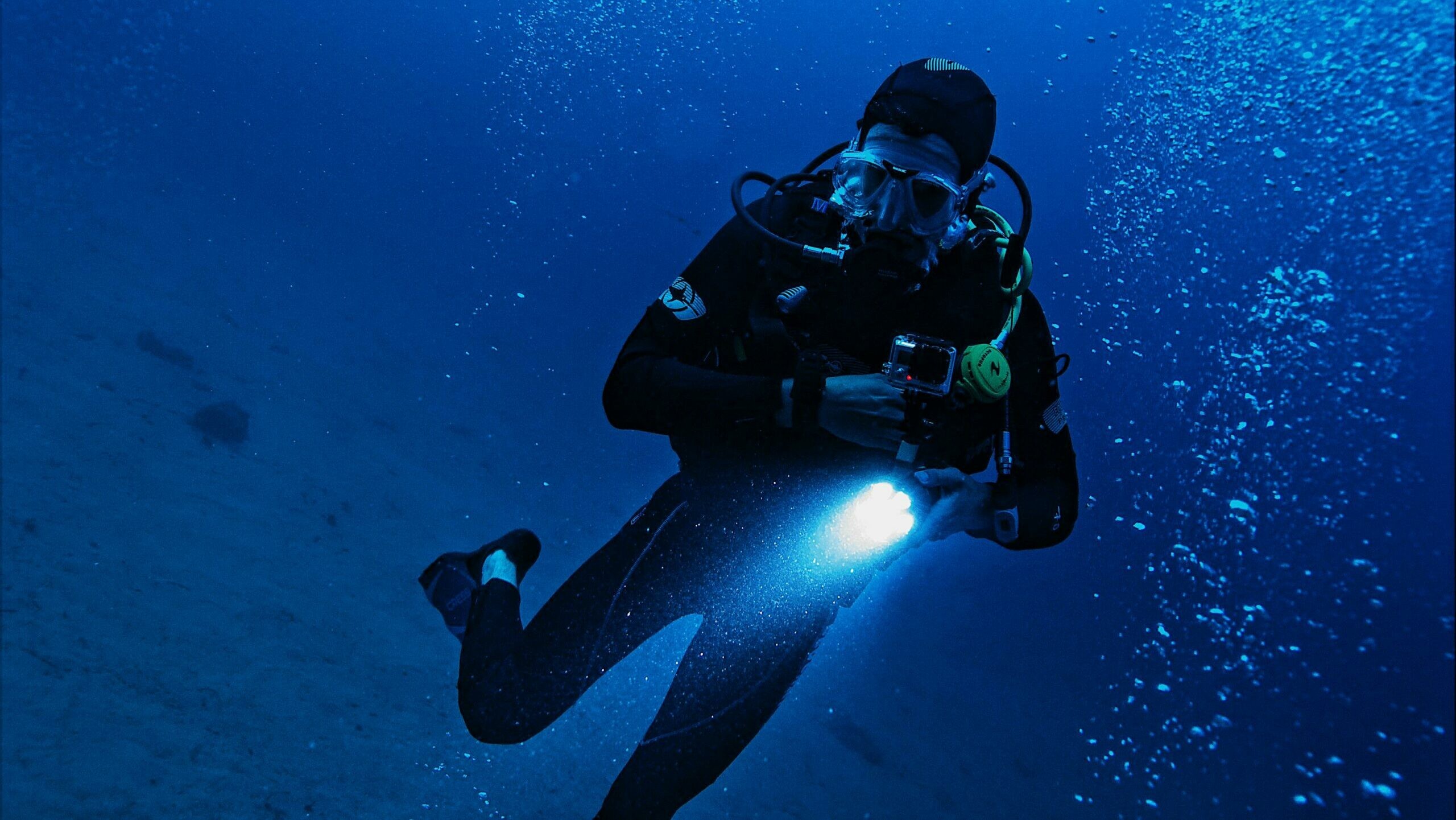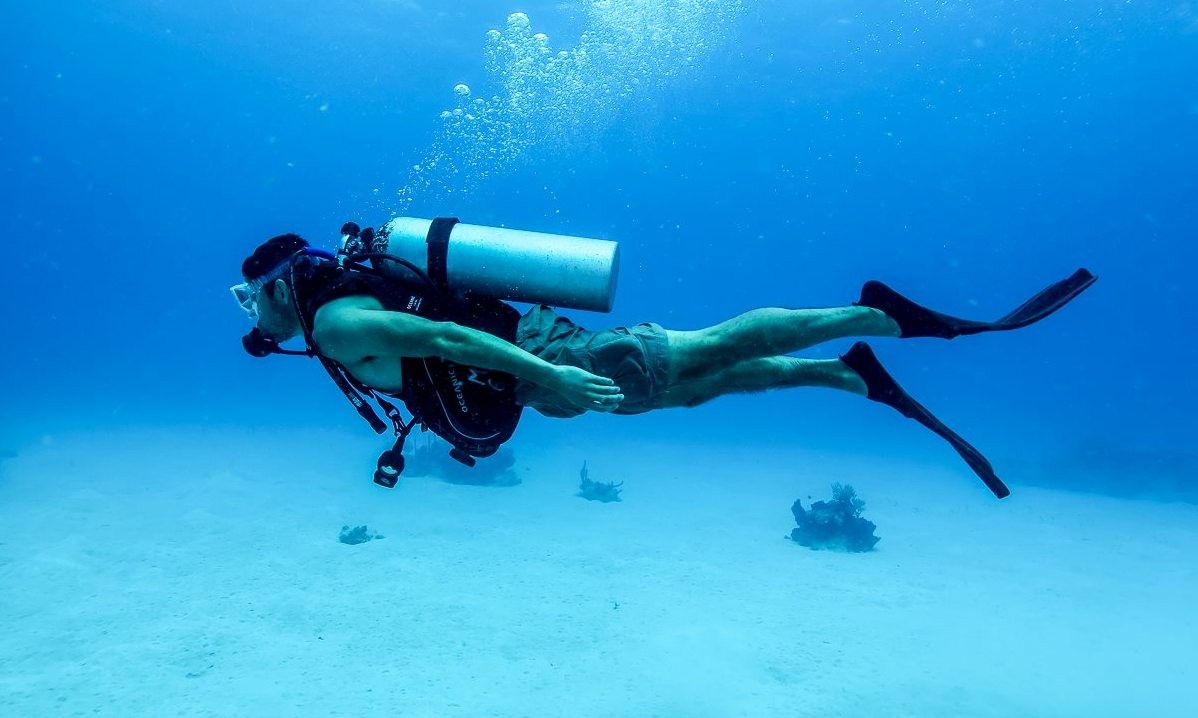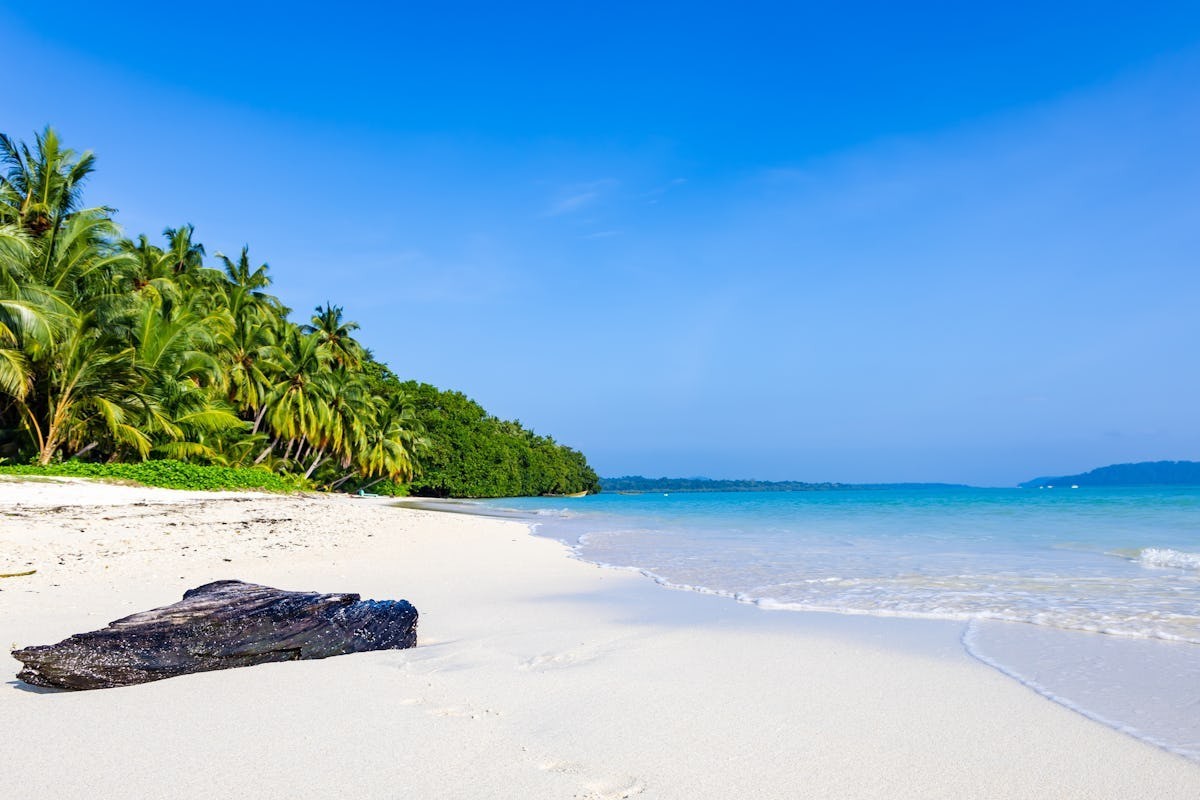Diving Sites in Port Blair



.jpg)
-
Aug 02, 2023
Imagine a pristine paradise where clouds flirt with the sapphire sea, and where golden sunsets narrate stories of enchanting marine life - welcome to the Andaman Islands, a diver's paradise nestled in the Bay of Bengal's tranquil lap. Here, Scuba diving is not merely an activity; it's a journey into a world teeming with colourful corals, unique marine species, and underwater adventures that you'll treasure forever. So, why should you choose Andaman for your scuba diving escapade? Read on to find out.
A Marine Life Extravaganza
Scuba diving in the Andamans offers a truly mesmerising spectacle. You're invited to a private audience with an exquisite array of marine life, from the radiant parrotfish, lionfish, and angelfish to the majestic sea turtles and rays. At places like Havelock Island's Elephant Beach, the shallow waters are perfect for novice divers to meet vibrant clownfish, groupers, and lobsters. More experienced divers can plunge into the deeper realms of Fish Rock near Passage Island, home to large pelagics and swirling schools of trevallies and barracudas.
Here's a sneak peek into the amazing aquatic creatures that call the Andamans home:
Corals: The Andaman Sea is home to over 200 species of coral, providing a veritable feast for the eyes with its array of colours and patterns. The most common types include staghorn, brain, pillar, table, and fire corals.
Fish: The coral reefs of the Andamans play host to a dazzling array of over 1000 species of fish, each more colourful than the last. The iconic clownfish, or "Nemo," is a frequent sight, often seen nestled amongst the tentacles of sea anemones. Parrotfish, angelfish, butterflyfish, lionfish, and groupers are other common sightings.
Sharks and Rays: The Andaman waters are home to several species of sharks and rays, offering thrilling encounters for divers. Whitetip and blacktip reef sharks, nurse sharks, and leopard sharks can often be spotted cruising the reefs. If you're lucky, you might catch a glimpse of the elusive whale shark, the largest fish in the sea.
Sea Turtles: Four species of sea turtles frequent the Andamans' waters – the Hawksbill, Green, Leatherback, and Olive Ridley turtles.
.jpg)
Dive Sites Galore
The Andaman Islands are blessed with a plethora of dive sites, each offering unique adventures. Beginners can dive at Nemo Reef or Lighthouse in Havelock Island, where mild currents and abundant marine life offer a gentle introduction to scuba diving. For the experienced divers, head to sites like Dixon's Pinnacle and Johnny’s Gorge, famed for their manta rays, whitetip and blacktip sharks, and stunning coral formations. The exhilaration of drifting alongside majestic creatures of the deep is an experience that will forever be etched in your memory.
Here are some of the best scuba diving sites the Andamans have to offer:
The Wall, Havelock Island: The Wall, a dive site just off Havelock Island, is renowned for its colourful drop-off that plunges into the deep. A multitude of soft corals, gorgonian fans, and a myriad of reef fish inhabit this vertical paradise.
Johnny's Gorge, Havelock Island: Named after a local diving pioneer, Johnny's Gorge is a thrill for experienced divers. This deep dive site is frequented by large pelagics like tuna and trevallies, and it's not uncommon to spot a grey reef or whitetip shark here.
Dixon’s Pinnacle, Havelock Island: An underwater mountain, Dixon's Pinnacle, is covered in vibrant soft corals, sea whips, and large gorgonian fans. The site is teeming with marine life, including large Napoleon wrasses, moray eels, and, if you're lucky, manta rays.
Jackson’s Bar, Port Blair: One of the deeper dive sites in the Andamans, Jackson's Bar is a long ridge teeming with soft corals and large gorgonian fans. The currents here attract large pelagics like barracudas, groupers, and even occasional sharks.
Lighthouse, Havelock Island: Lighthouse is a great site for beginners and night dives. With a depth ranging from 6 to 18 metres, you'll find an array of creatures like octopus, lobsters, lionfish, and even the unique Humpback parrotfish here.
.jpg)
Wreck Diving Opportunities
History and adventure intertwine in the Andaman's wreck diving sites. The sunken remnants of ships like the British SS Lord Lister near Port Blair create an eerie yet fascinating playground for divers. Swimming through these marine archaeology sites, you'll not only appreciate the marine life that has claimed these wrecks as their home but also sense the poignant echoes of bygone eras.
Here are some of the best wreck diving sites in the Andamans:
SS Yongala Wreck, Port Blair: Undoubtedly the most famous wreck dive in the Andamans, the SS Yongala is a British steamship that sank in 1862. Resting between 14 and 23 meters, the wreck has been enveloped by vibrant coral growth and hosts a wide variety of marine life, including large groupers, lionfish, and moray eels.
MV Mars, Neil Island: Another World War II wreck, the MV Mars was a Burmese ship used to transport rice. Located at a depth of 25 to 30 metres, this dive is suitable for advanced divers. Overgrown with soft corals and sponges, the wreck attracts a host of marine life, including groupers, barracudas, and occasionally sharks.
MV Ingot Wreck, Port Blair: This iron barge sank in 1999 and rests at a depth of 18 meters, making it a great dive site for intermediate divers. Over the years, the MV Ingot has become a haven for marine life.
British SS Lord Lister Wreck, Port Blair: Sunk during World War II, the SS Lord Lister now lies split in two in the vicinity of Port Blair. Its depth varies from 5 to 30 meters, offering diverse environments for divers of all levels. Exploring this massive 144-meter wreck is like a step back in time.
World-Class Dive Centres and Instructors
Diving in the Andamans is made comfortable and safe by several world-class diving centres offering PADI and SSI certifications. Their professional, multilingual instructors prioritise safety while ensuring you have an unforgettable underwater experience. Whether you are a first-time diver looking to get your feet wet or an experienced diver aiming for advanced certifications, the Andaman Islands have got you covered.
Numerous dive centres in the Andamans are PADI certified, guaranteeing adherence to global standards for dive education and safety. These centres offer courses ranging from Discover Scuba Diving for beginners to Dive Master for those aspiring to become professional divers. The dive centres also boast a team of highly skilled and experienced instructors, many of whom hold advanced certifications and specialties.
The best part is that most dive centres offer comprehensive packages that include everything you need for a memorable diving experience: equipment rental, boat charges, dive guides, and refreshments. Some centres also provide accommodation, making them one-stop shops for your diving vacation.
An Ideal Destination Year-Round
The Andamans are a year-round destination, with temperatures hovering between a pleasant 24°C and 30°C. Post-monsoon, from October to February, is often considered the ideal season for diving in the Andamans. The sea calms down during these months, and underwater visibility can reach up to 20-40 metres. The water temperature remains a comfortable 27-30°C, making it pleasant for divers.
The period from March to May continues to offer excellent diving conditions, with the sea remaining calm and visibility high. The water temperature might rise slightly but generally remains within a comfortable range for diving.
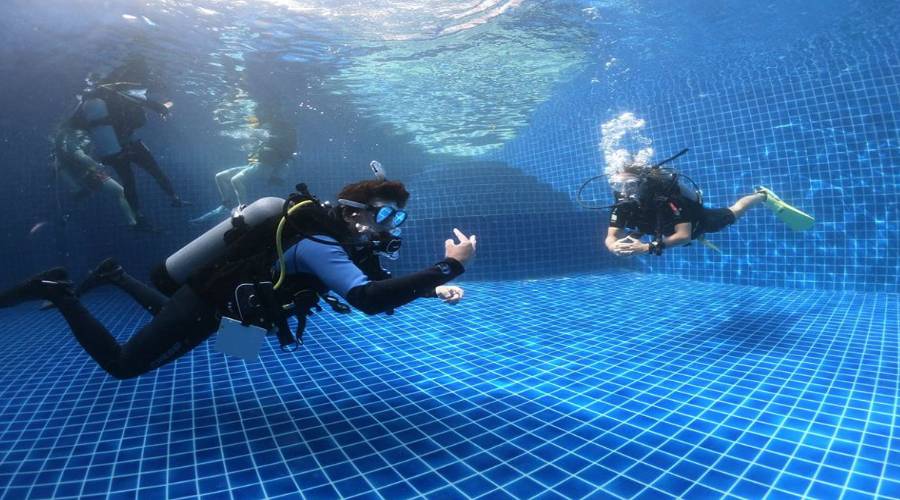
More than Just Diving
Beyond the diving, the Andamans offer pristine beaches, historical sites, and diverse wildlife. When you're not diving, explore the historic Cellular Jail in Port Blair, trek through the dense forests of Mount Harriet National Park, or relax on Radhanagar Beach's powdery sands. The islands' vibrant tribal culture, lip-smacking seafood, and laid-back lifestyle add to the overall charm. If you're looking for other exhilarating things to do on these emerald islands, here are some top suggestions:
Explore Radhanagar Beach: Often listed among the most beautiful beaches in Asia, Radhanagar Beach on Havelock Island is a slice of paradise. The soft white sand, crystal clear water, and lush forest backdrop create an idyllic setting for relaxation.
Visit the Cellular Jail: A poignant symbol of India's struggle for independence, the Cellular Jail in Port Blair is a must-visit. Also known as "Kala Pani," this colonial prison once housed many Indian freedom fighters. The evening sound and light show narrating the prison's history is particularly moving.
Snorkelling at Elephant Beach: Elephant Beach on Havelock Island is famed for its vibrant coral reefs, which are easily accessible from the shore, making it a fantastic snorkelling spot. Swim alongside a multitude of colourful fishes and marvel at the diversity of the underwater world.
Trek to Mount Harriet: For hiking enthusiasts, a trek to Mount Harriet, the third-highest peak in the Andamans, is a must. The trail, which starts from Bamboo Flat, offers panoramic views of the islands and the turquoise sea.
Island Hopping: With over 300 islands, the Andamans offer endless opportunities for exploration. Visit the limestone caves on Baratang Island, relax on the untouched beaches of Neil Island, or venture to the tribal-inhabited North Sentinel Island to catch a glimpse of one of the world's most isolated populations.
Diving Sites in Port Blair
Diving Sites in Havelock Island
Diving Sites in Neil Island
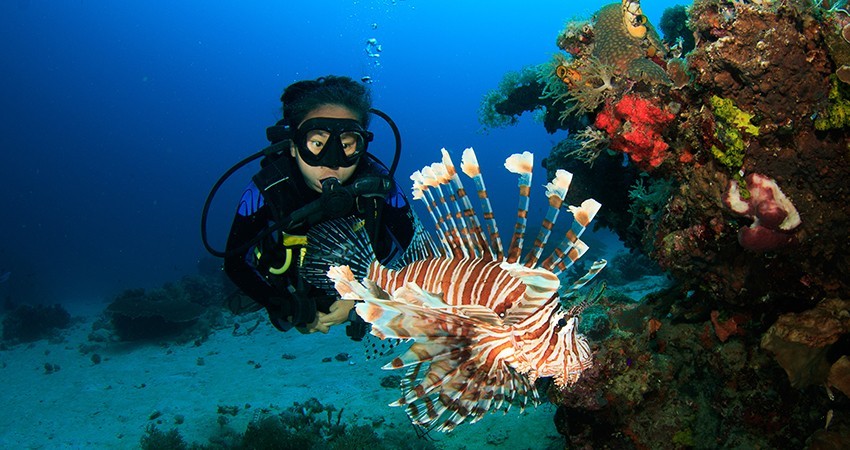
.jpg)
